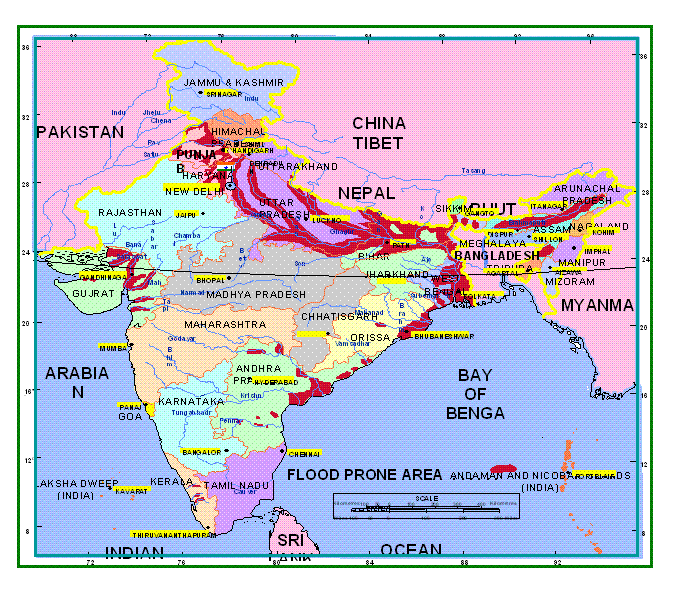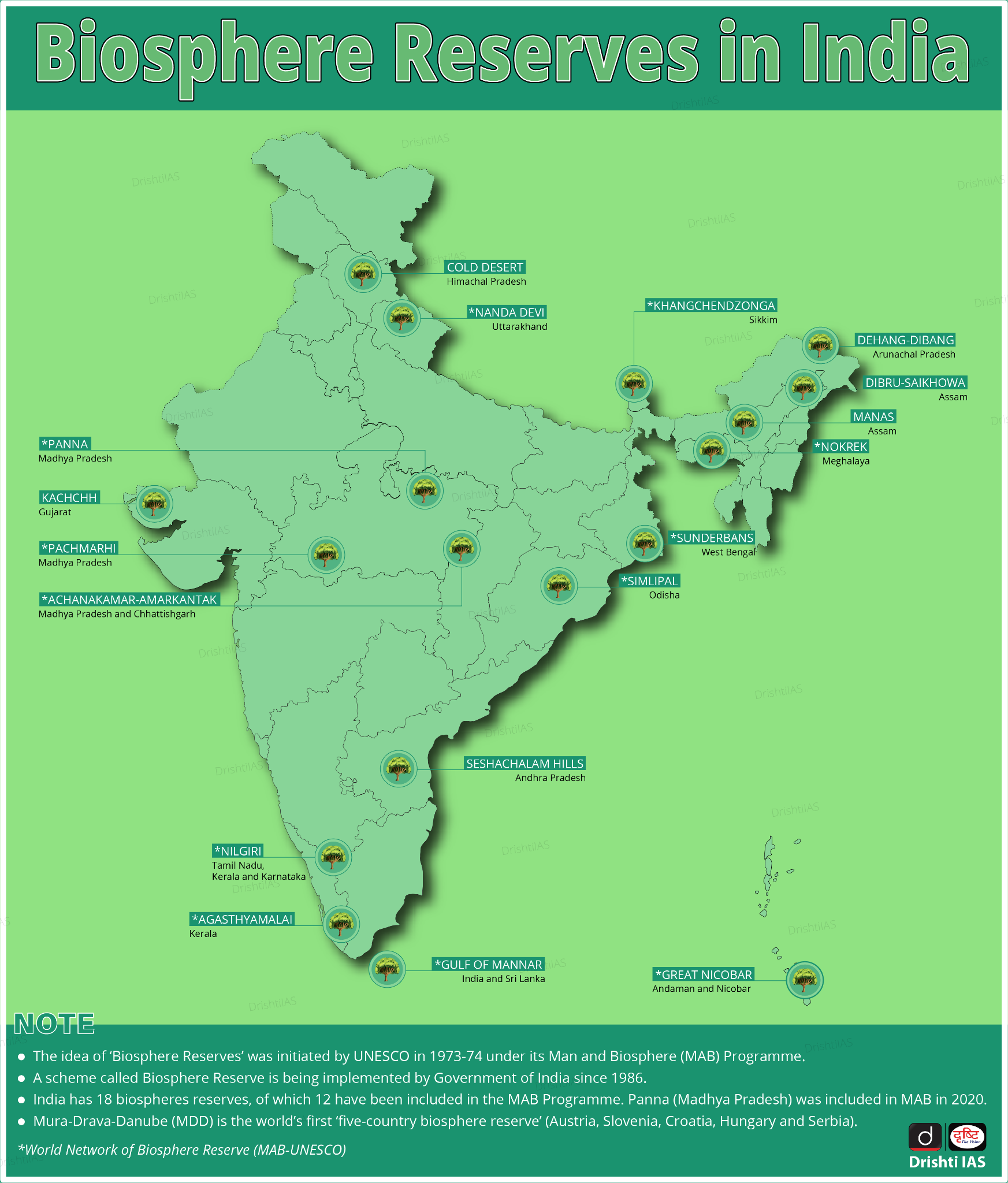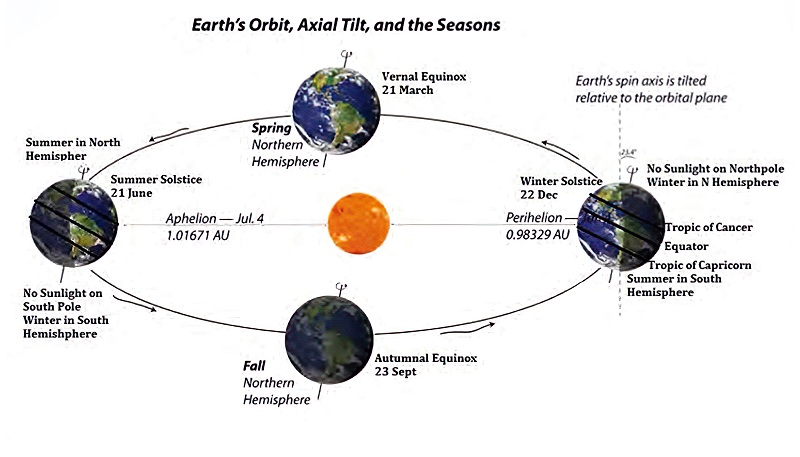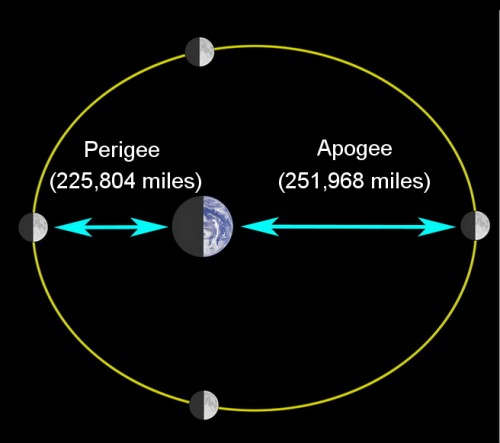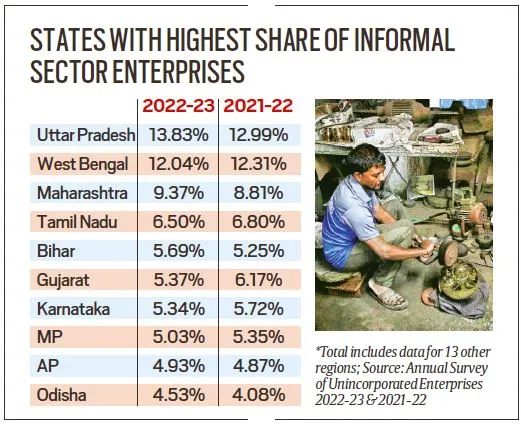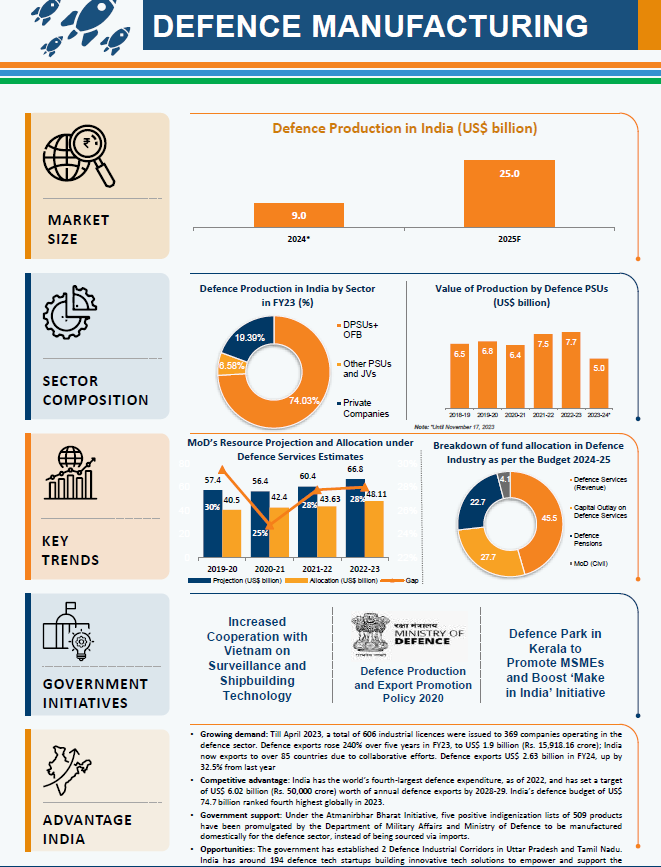Assam Floods
For Prelims: Flood, Landslide, Brahmaputra River System, Kaziranga National Park, Topography of India
For Mains: Causes of floods, Impact on life and economy, Measures to tackle, Disaster Management Bodies
Why in News?
Recently, floods in Assam have resulted in over 50 deaths, displacing 360,000 people.
- More than 40,000 hectares of crops and 130 wild animals have been affected by flooding.
What is Flood?
- About:
-
Floods are the most frequent type of natural disaster and occur when an overflow of water submerges land that is usually dry.
- Between 1998-2017, 2 Billion people have been affected worldwide due to floods.
-
- Causes:
- These are often caused by heavy rainfall, rapid snowmelt or a storm surge from a tropical cyclone or tsunami in coastal areas.
- Types of Floods:
- Flash Floods: These are caused by rapid and excessive rainfall that raises water heights quickly, and rivers, streams, channels or roads may be overtaken.
- River Floods: These are caused when consistent rain or snow melt forces a river to exceed capacity.
- Coastal Floods: These are caused by storm surges associated with tropical cyclones and tsunami.
- State of Flood in India:
- India has a total geographical area of 329 million hectares, out of which more than 40 million hectares are flood-prone.
- Flood-related damages have shown an increasing trend, with the average annual flood damage between 1996-2005 being Rs. 4745 crore, compared to Rs. 1805 crore in the previous 53 years.
- Floods Prone Area in India:
NDMA Guidelines for Floods
- Preparing for Floods:
- Avoid building in flood-prone areas unless you elevate and reinforce your home.
- Elevate furnace, water heater, and electrical panel if susceptible to flooding.
- Install check valves in sewer traps to prevent flood water backup.
- Contact officials about flood barriers being constructed in your area.
- Seal basement walls with waterproofing compounds.
-
When a Flood is Likely:
- Listen to radio/TV for information.
- Be aware of flash flooding - move to higher ground immediately if risk.
- Be aware of areas known to flood suddenly.
- If Evacuating:
- Secure your home - bring in outdoor furniture, move items upstairs.
- Turn off utilities if instructed.
- Do not walk or drive through moving floodwater.
What are the Causes of Regular Floods in Assam?
- Large Number of Rivers:
- Assam has more than 120 rivers, several of which originate from the hills and mountains of extreme rainfall hotspots in Arunachal Pradesh and Meghalaya as well as in China and Bhutan.
- The Brahmaputra river, flowing through Assam, accumulates significant sediment as it reaches the lower elevation of Assam, slowing down and depositing sediment and debris.
- In summer, sedimentation intensifies due to soil erosion from glacier melting.
- The Monsoon:
- The monsoon is intense in the Northeast. According to the State Disaster Management Authority, annual rainfall averages around 2900 mm with maximum precipitation in June and July.
- As per data from Assam government, 85% of the annual rainfall in the Brahmaputra basin takes place during the monsoon months.
- It also gets a good amount of rainfall in April and May due to thunderstorm (Kalbaisakhi) activities which account for flooding during heavy rain in June.
- The monsoon is intense in the Northeast. According to the State Disaster Management Authority, annual rainfall averages around 2900 mm with maximum precipitation in June and July.
- Climate Change:
- The melting of glaciers and snow caps in the Tibetan Plateau due to global warming and climate change is causing increased water flow in the Brahmaputra River, impacting downstream regions like Assam with more frequent flooding.
- Human Intervention:
- Construction of Embankments: Construction of embankments first started in Assam in the 1960s to control floods. However, six decades later, most of these embankments have either outlived their utility or are in bad condition.
- Population Boom: Population boom has put more pressure on the State’s ecology.
- The population density of Brahmaputra valley has increased from 9-29 people per sq. km. in 1940-41 to 398 per sq. km in the plain areas of Assam as per the 2011 census, according to a report by the Brahmaputra Board. This has led to human settlements in river basin areas becoming more vulnerable to floods.
- Jhum cultivation: It is also known as shifting cultivation, involves slash-and-burn practices that strip the soil's protective layer, leading to accelerated erosion and reduced water absorption capacity. Soil and plant material runoff contribute to sedimentation in river basins.
What are the Implications of Floods in Assam?
- Loss of Wildlife: The floods have resulted in the death of over 130 wild animals, including at least 6 rare one-horned rhinos in Kaziranga National Park, Assam. Other animals that have perished include 117 hog deer, 2 sambar deer, a rhesus macaque, and an otter.
- Kaziranga is home to the world's largest population of one-horned rhinos.
- Damage to Infrastructure: The floods have caused extensive damage to roads and other infrastructure, hampering rescue and relief efforts.
- Displacement of People: The floods in Assam have displaced over 2 million people, with many seeking shelter in relief camps. This has put additional strain on the resources and management.
What are the Steps Taken to Manage Floods in India?
- National Flood Management Programme (NFMP): It was launched in 1954 to provide a flexible framework for states to choose site-specific interventions, considering geographical realities and resource constraints. It emphasises both structural (dams, embankments) and non-structural (floodplain zoning) measures.
- Rashtriya Barh Ayog (1976): This established an integrated approach for flood control, prioritizing scientific analysis and national planning.
- National Water Policy (2012): This policy advocates strategic reservoir operation to create flood cushions and minimise sedimentation during floods. Floodplain zoning is emphasized for regulated development in flood-prone areas.
- National Hydrology Project (2016): This project strengthens flood forecasting through real-time hydro-meteorological data accessible at all levels (state, district, village).
- Flood Management and Border Areas Programme (FMBAP): This program focuses on catchment area treatment to reduce sediment load in rivers, thereby enhancing their carrying capacity and minimizing overflow.
- Flood Plain Zoning: This strategy aims to demarcate flood-prone areas and regulate land use to prevent encroachment and minimise damage.
- Flood Proofing: Elevating vulnerable settlements and crucial infrastructure above flood levels can significantly reduce losses.
National Disaster Response Force (NDRF)
- It is an Indian specialised force constituted under the Disaster Management Act, 2005.
- The responsibility of managing disasters in India is that of the state governments. The ‘Nodal Ministry’ in the central government for management of natural disasters is the Ministry of Home Affairs (MHA).
- It refers to trained professional units that are called upon for specialised response to disasters.
Way Forward
- Early Warning Systems: The need for new early warning and response systems to adapt to floods is evident from past experiences. It is essential to provide credible information for better preparedness and alerting residents.
- A parliamentary panel in 2021 suggested modernising flood warning systems by installing advanced weather stations and sirens.
- Improved Infrastructure: Investing in well-designed infrastructure and drainage systems can help manage excess water during heavy rainfall.
- Sluice Gates, which control water levels and flow rates in rivers and canals, should be constructed on tributaries of Brahmaputra and other rivers to be effective.
- Collaborative Effort: Improve cooperation between state and central governments to ensure that resources and efforts are effectively focused on sustainable flood management solutions.
- There is a need to strengthen bilateral exchange of hydrological data with China to prevent flooding in Brahmaputra river.
- Sustainable Land Management: It involves avoiding construction in floodplains, promoting responsible practices to prevent excavation and deforestation, and controlling soil erosion along riverbanks to stabilise landscapes and reduce sediment load.
- Implementing Recommendations of Task Force 2004 on Flood Management/ Erosion Control:
- Higher Investment: Dedicating funds in the State sector as Additional Central assistance for maintenance of embankments.
- The Central Government may consider funding the flood control component of the reservoir projects.
- Role Expansion: Expanding the role of the central government in the flood control sector.
- The flood control schemes should be funded through a Centrally Sponsored Scheme in the ratio of 90% Central and 10% State from the present 75:25.
- Higher Investment: Dedicating funds in the State sector as Additional Central assistance for maintenance of embankments.
|
Drishti Mains Question: The distinctive topography, climate, and socio-economic conditions of Assam increase its susceptibility to disasters such as floods. Comment. |
UPSC Civil Services Examination, Previous Year Questions (PYQs)
Q. Which of the following is/are tributary/tributaries of Brahmaputra?
- Dibang
- Kameng
- Lohit
Select the correct answer using the code given below:
(a) 1 only
(b) 2 and 3 only
(c) 1 and 3 only
(d) 1, 2 and 3
Ans: (d)
Q. With reference to river Teesta, consider the following statements:
- The source of river Teesta is the same as that of Brahmaputra but it flows through Sikkim.
- River Rangeet originates in Sikkim and it is a tributary of river Teesta.
- River Teesta flows into Bay of Bengal on the border of India and Bangladesh.
Which of the statements given above is/are correct?
(a) 1 and 3 only
(b) 2 only
(c) 2 and 3 only
(d) 1, 2 and 3
Ans: (b)
Gallantry Awards 2024
For Prelims: Gallantry Awards, Armed Forces
For Mains: Various Security Forces & Agencies & Their Mandate
Why in News?
Recently, the President of India, presented Gallantry Awards at the Defence Investiture Ceremony-2024 held at Rashtrapati Bhavan.
What are the Gallantry Awards?
- About:
- Gallantry Awards have been instituted to honour the acts of bravery and sacrifice of the officers/personnel of the Armed Forces, other lawfully constituted Forces and civilians.
- These gallantry awards are announced twice in a year, first on the occasion of the Republic Day and then on the occasion of the Independence Day.
-
Gallantry Award in the Face of Enemy:
- Param Vir Chakra (PVC): It shall have embossed on the obverse four replicas of "Indra's Vajra" with the State Emblem embossed in the centre.
- Mahavir Chakra (MVC): It shall have embossed on the obverse a five-pointed heraldic star with the points of the star just touching the rim. The star shall have in the centre a domed gilded State Emblem.
-
Vir Chakra: The star will feature a Chakra at its centre, with a domed centerpiece inside the Chakra bearing the gilded State Emblem.Types:
-
Gallantry Award Other than in the Face of Enemy:
-
In case of Ashok Chakra, Kirti Chakra and Shaurya Chakra the obverse of the medal shall be embossed a replica of respective chakra in the centre, surrounded by a lotus wreath. Along the rim, on the inner side, shall be a pattern of lotus leaves, flowers and buds.
- On its reverse shall be embossed the respective words both in Hindi and English the two versions being separated by two lotus flowers.
-
- Order of precedence of the Award:
- Param Vir Chakra
- Ashoka Chakra
- Mahavir Chakra
- Kirti Chakra
- Vir Chakra
- Shaurya Chakra
What is the Eligibility and Selection Criteria to be Awarded the Gallantary Awards?
- Param Vir Chakra, the Maha Vir Chakra and the Vir Chakra:
- Personnel of all ranks of the Naval, Military and Air Forces, Reserve Forces, Territorial Army, Militia and of any other lawfully constituted Armed Forces.
- Matrons, Sisters, Nurses and the Staff of the Nursing Services and other Services pertaining to Hospitals and Nursing, and Civilians serving under the directions of any of the above-mentioned Forces.
- Conditions of Eligibility: These awards are given for action against the enemy, whether on land, at sea, or in the air.
- Param Vir Chakra: For most conspicuous bravery or some daring or pre-eminent act of valour or self-sacrifice.
- Maha Vir Chakra: For acts of conspicuous gallantry
- Vir Chakra: For acts of gallantry
- Ashoka Chakra, Kirti Chakra & Shaurya Chakra:
- Officers and men and women of all ranks of the Army, the Navy and the Air Force, of any of the Reserve Forces, of the Territorial Army, Militia and of any other lawfully constituted forces.
- Members of the Nursing Services of the Armed Forces.
- Civilian citizens and members of Police Forces including Central Para-Military Forces and Railway Protection Force.
- Conditions of Eligibility: These awards are given for acts in the face of the enemy.
- Ashoka Chakra: For most conspicuous bravery or some act of daring or pre-eminent act of valour or self-sacrifice
- Kirti Chakra: For conspicuous gallantry
- Shaurya Chakra: For gallantry
- Selection process:
- Ministry of Defence invites recommendations twice in a year from the Armed Forces and Union Ministry of Home Affairs for gallantry awards.
- In respect of the Armed Forces, a case for the gallantry award is initiated by the Unit recommended by Commanders.
- Recommendations in respect of civilian citizens (other than Defence personnel) are received from the Union Ministry of Home Affairs (MHA).
- Recommendations received directly from private individuals, including VIP references are not accepted.
- In any case, the time limit for considering gallantry awards should not be beyond two calendar years from the date on which the act of gallantry is performed.
- Recommendations from the Armed Forces and MHA are considered by the Central Honours & Awards Committee (CH&AC) composed of Defence Minister, three Service Chiefs & Defence Secretary.
- Awardee in the Defence Investiture Ceremony 2024:
- The President awarded 10 Kirti Chakras (7 posthumously) and 26 Shaurya Chakras (7 awarded posthumously).
- Inspector Dilip Kumar, head constable Raj Kumar Yadava, constable Bablu Rabha and Sambhu Roy of the 210 CoBRA Battalion, CRPF, were posthumously presented the Kirti Chakra for a collective act against the Maoists’ ambush in Chhattisgarh’s Bijapur on 3rd April 2021.
- Major Vikas Bhambhu and major Mustafa Bohara were posthumously awarded the Shaurya Chakra.
- The two officers had steered their chopper had caught fire, away from human habitation and were killed after crash landing in Arunachal Pradesh’s Upper Siang district
UPSC Civil Services Examination, Previous Year Question (PYQ)
Prelims:
Q. Consider the following statements in respect of Bharat Ratna and Padma Awards: (2021)
- Bharat Ratna and Padma Awards are titles under the Article 18(1) of the Constitution of India.
- Padma Awards, which were instituted in the year 1954, were suspended only once.
- The number of Bharat Ratna Awards is restricted to a maximum of five in a particular year.
Which of the above statements are not correct?
(a) 1 and 2 only
(b) 2 and 3 only
(c) 1 and 3 only
(d) 1, 2 and 3
Ans: (d)
Q. Consider the following statements in respect of the Laureus World Sports Award which was instituted in the year 2000: (2021)
- American golfer Tiger Woods was the first winner of this award.
- The award was received mostly by ‘Formula One’ players so far.
- Roger Federer received this award maximum number of times compared to others.
Which of the above statements are correct?
(a) 1 and 2 only
(b) 2 and 3 only
(c) 1 and 3 only
(d) 1, 2 and 3
Ans: (c)
India’s Pharmaceutical Industry
For Prelims: India's pharmaceutical industry, World Health Organization (WHO), Central Drugs Standard Control Organisation (CDSCO), Intellectual Property Rights (IPR) laws, Production Linked Incentive (PLI) Scheme.
For Mains: Status of India's Pharmaceutical Industry , Major Challenges with India’s Pharma Sector.
Why in News?
Recently, around 36% of pharmaceutical manufacturing units inspected by the Indian drug regulator were shut down for non-compliance with quality standards following risk-based inspections by the Central Drug Standards Control Organisation (CDSCO) since December 2022.
What are the Incidents Highlighting Quality Control Failures?
- According to a report by Indian Pharmaceutical Alliance and McKinsey & Company in 2023, the US Food and Drug Administration (FDA) classified 13% of its 145 inspections of Indian facilities as Official Action Indication (OAI), which is lower than the global average of 15% OAIs.
-
Data integrity issues were prevalent, including falsified data, improper cohort distribution, questionable sample reanalysis practices, and poor systemic quality management.
-
-
In October 2022, the World Health Organisation (WHO) issued an alert linking four products from India's Maiden Pharmaceuticals to acute kidney injury and 66 child deaths in Gambia, due to contamination with toxic chemicals diethylene glycol and ethylene glycol.
-
In December 2022, the CDSCO initiated a probe in connection with the death of 18 children in Uzbekistan allegedly linked to a cough syrup manufactured by Indian firm Marion Biotech.
-
Recently, US Centers for Disease Control and Prevention (CDC) and the Food and Drug Administration (USFDA) raised concerns over a drug-resistant bacteria strain allegedly linked to eye drops imported from India.
-
-
In January 2020, 12 children in Jammu died after consuming contaminated medicine, that was found to contain diethylene glycol, which led to kidney poisoning.
How Drugs Are Regulated in India?
- The Drugs and Cosmetics Act,1940:
- The Drugs and Cosmetics Act, 1940 and Rules 1945 have entrusted various responsibilities to central and state regulators for regulation of drugs and cosmetics.
- It provides the regulatory guidelines for issuing licenses to manufacture Ayurvedic, Siddha, Unani medicines.
- Central Drugs Standard Control Organisation (CDSCO):
- Prescribes standards and measures for ensuring the safety, efficacy and quality of drugs, cosmetics, diagnostics and devices in the country.
- Regulates the market authorisation of new drugs and clinical trials standards.
- Drugs Controller General of India:
- DCGI is the head of the department of the CDSCO of the Government of India responsible for the approval of licences of specified categories of drugs such as blood and blood products, IV fluids, vaccines and sera in India.
- DCGI also sets standards for manufacturing, sales, import, and distribution of drugs in India.
What is the Status of the Indian Pharmaceutical Industry?
- Current Scenario:
-
India is one of the biggest suppliers of low-cost vaccines in the world and is the largest provider of generic medicines globally, occupying a 20% share in global supply by volume.
- India accounts for 60% of global vaccine production making it the largest vaccine producer in the world.
- The Pharmaceutical industry in India is the 3rd largest in the world in terms of volume and 14th largest in terms of value.
- The Pharma sector currently contributes to around 1.72% of the country’s Gross Domestic Product (GDP).
-
- Market Size & Investments: India is among the top 12 destinations for biotechnology worldwide and 3rd largest destination for biotechnology in Asia Pacific.
- The Indian pharmaceutical industry has seen a massive expansion over the last few years and is expected to reach about 13% of the size of the global pharma market while enhancing its quality, affordability, and innovation.
- Up to 100%, Foreign Direct Investment (FDI) has been allowed through automatic routes for Greenfield pharmaceuticals projects.
-
For Brownfield Pharmaceuticals projects, FDI allowed is up to 74% through automatic route and beyond that through government approval.
-
- Indian pharmaceutical market is estimated to touch USD 130 billion in value by the end of 2030.
- Exports: Pharmaceutical is one of the top ten attractive sectors for foreign investment in India. The pharmaceutical exports reached more than 200 nations around the world, including highly regulated markets of the USA, West Europe, Japan, and Australia.
- India’s drugs and pharmaceuticals exports stood at USD 22.51 billion in FY24 (April-January) recording a strong year-on-year growth of 8.12% during the period.
Greenfield vs Brownfield Investment
- Greenfield Project: It refers to investment in a manufacturing, office, or other physical company-related structure or group of structures in an area where no previous facilities exist.
- Brownfield investment: The projects which are modified or upgraded are called brownfield projects. The term is used for purchasing or leasing existing production facilities to launch a new production activity.
What are the Major Challenges with India’s Pharma Sector?
- Violation of IPR Rules: Indian pharmaceutical companies have faced allegations of violating Intellectual Property Rights (IPR) laws, resulting in legal disputes with multinational pharmaceutical companies.
- One such case involved Swiss pharmaceutical company Roche and Indian drug manufacturer Cipla in 2014.
- Roche claimed Cipla copied its cancer drug Tarceva, leading to a legal fight where Cipla was found guilty and ordered to compensate Roche.
- One such case involved Swiss pharmaceutical company Roche and Indian drug manufacturer Cipla in 2014.
- Pricing and Affordability: India is known for its generic drug manufacturing capabilities, which have contributed to affordable healthcare globally.
- However, ensuring medicines in India are affordable while maintaining pharmaceutical companies' profitability is challenging.
- Additionally, quality problems in generic drugs could harm the reputation of the industry, which supplies more than 90% of US prescriptions.
- Healthcare Infrastructure and Access: Despite India's strong pharmaceutical industry, access to healthcare remains a challenge for a significant portion of the population.
- Issues such as inadequate healthcare infrastructure, uneven distribution of healthcare facilities, and low health insurance coverage pose barriers to accessing medicines.
- Overdependence on Imports: The Indian pharma sector relies heavily on imports for Active Pharmaceutical Ingredients (APIs), the raw materials for drugs. Disruptions in the global supply chain can lead to shortages and price hikes.
Related Government Initiatives
Way Forward
- Legislative Changes and Centralised Database: Drugs and Cosmetics Act (1940) needs to be amended and the establishment of a centralised drugs database can enhance surveillance and ensure effective regulation across all manufacturers.
- India has 36 regional drug regulators; consolidating them into a single entity can reduce the risk of regulatory capture and influence networks.
- Also, implementing common quality standards across all states is necessary to ensure consistent product quality.
- Promote Continuous Improvement Programs: Motivate pharmaceutical companies to implement voluntary quality management systems and self-improvement initiatives. This can be fostered through industry associations and government incentives.
- Transparency and Public Reporting: Increase transparency in regulatory actions and public reporting of quality control failures. This can be achieved through designated government portals for sharing inspection reports and drug recalls.
- Focus on Sustainable Manufacturing Practices: Emphasising sustainable manufacturing practices, including green chemistry, waste reduction, and energy efficiency, can enhance the sector's environmental sustainability while reducing costs.
- Adopting environmentally friendly practices can also contribute to a positive brand image and attract environmentally conscious consumers.
- Digital Drug Regulatory System (DDRS): A request for proposal has been floated for the DDRS, which will be an umbrella portal for pharmaceutical regulations.
- The SUGAM portal is being enhanced to create an improved version. This new version will integrate all the activities and functions of the CDSCO. Eventually, it will also include the state drug controllers and other relevant agencies under its purview.
- Streamlining and Rationalising the Drug Regulatory Structure and Functions: The government should create a single, central authority with adequate powers, resources, expertise and autonomy to regulate the entire pharma sector and ensure effective enforcement and compliance of the drug laws and norms.
- Strengthen Pharmacovigilance: Enhance surveillance of drugs post-marketing to identify and address adverse effects promptly. This aligns with recommendations for stricter quality control measures.
|
Drishti Mains Question: Q. Critically analyze the current challenges faced by the Indian pharmaceutical sector. Discuss the implications of these challenges on public health and the economy. |
UPSC Civil Services Examination Previous Year’s Questions (PYQs)
Prelims:
Q. Which of the following are the reasons for the occurrence of multi-drug resistance in microbial pathogens in India? (2019)
- Genetic predisposition of some people
- Taking incorrect doses of antibiotics to cure diseases
- Using antibiotics in livestock farming
- Multiple chronic diseases in some people
Select the correct answer using the code given below.
(a) 1 and 2
(b) 2 and 3 only
(c) 1, 3 and 4
(d) 2, 3 and 4
Ans: (b)
Mains:
Q. How is the Government of India protecting traditional knowledge of medicine from patenting by pharmaceutical companies? (2019)
UNESCO Designates 11 New Biosphere Reserves
For Prelims: Biosphere Reserve, United Nations Educational, Scientific and Cultural Organization (UNESCO), Biosphere Reserves in India, Man and Biosphere Programme (MAB).
For Mains: Biosphere Reserves: Criteria for Designation, Main Zones, Functions, International Status.
Why in News?
Recently, UNESCO has approved the designation of 11 new Biosphere Reserves (BR) in 11 countries.
- The World Network of Biosphere Reserves thus now comprises 759 sites across 136 countries.
What are the New Additions to the UNESCO Biosphere Reserve List?
- Kempen-Broek Transboundary Biosphere Reserve (Belgium, Kingdom of the Netherlands)
- Darién Norte Chocoano Biosphere Reserve (Colombia)
- Madre de las Aguas Biosphere Reserve (Dominican Republic)
- Niumi Biosphere Reserve (Gambia)
- Colli Euganei Biosphere Reserve (Italy)
- Julian Alps Transboundary Biosphere Reserve (Italy, Slovenia)
- Khar Us Lake Biosphere Reserve (Mongolia)
- Apayaos Biosphere Reserve (Philippines)
- Changnyeong Biosphere Reserve (Republic of Korea)
- Val d'Aran Biosphere Reserve (Spain)
- Irati Biosphere Reserve (Spain)
What is a Biosphere Reserve?
- About:
- It is an international designation by the United Nations Educational, Scientific and Cultural Organization (UNESCO) for representative parts of natural and cultural landscapes extending over a large area of terrestrial or coastal/marine ecosystems or a combination of both.
- Biosphere Reserves tries to balance economic and social development and maintenance of associated cultural values along with the preservation of nature.
- These are special environments for both people and nature and are living examples of how human beings and nature can co-exist while respecting each other’s needs.
- Criteria for Designation of BR:
- A site must contain a protected and minimally disturbed core area of value of nature conservation.
- The core area must be a bio-geographical unit and should be large enough to sustain a viable population representing all trophic levels.
- The involvement of local communities and use of their knowledge in biodiversity preservation.
- Area's potential for preservation of traditional tribal or rural modes of living for harmonious use of the environment.
-
Conservation: Managing Biosphere Reserve’s genetic resources, endemic species, ecosystems, and landscapes.
- Along with the wildlife, culture and customs of tribals are also protected.
- Development: Promoting economic and human growth that is sustainable on a sociocultural and ecological level.
-
It seeks to strengthen the 3 pillars of sustainable development which are social, economic and protection of the environment.Functions of BR:
-
-
Logistic support:
- Promoting research activities, environmental education, training and monitoring in the context of local, national and international conservation and sustainable development.
What is the Biosphere Reserve Project?
- The Government of India started the Biosphere Reserve scheme in 1986.
- This is guided by the UNESCO MAB programme, as India is a signatory to the landscape approach supported by MAB.
- Under this scheme, financial assistance is provided in a 90:10 ratio to the North Eastern Region States and 3 Himalayan states, and in a 60:40 ratio to other states for the maintenance, improvement, and development of certain items within the biosphere reserves.
- The State Government prepares the Management Action Plan for the biosphere reserves, which is then approved and monitored by the Central MAB Committee.
- This scheme is implemented by the Ministry of Environment, Forest and Climate Change.
What are the 3 Zones of Biosphere Reserve?
- Core:
- It is the most protected area of a biosphere reserve. It may contain endemic plants and animals.
- They conserve the wild relatives of economic species and also represent important genetic reservoirs having exceptional scientific interest.
- A core zone is a protected region, like a National Park or Sanctuary/protected/regulated mostly under the Wildlife (Protection) Act, 1972.
- It is kept free from human interference.
- Buffer Zone:
- It surrounds the core zone, and its activities are managed such that it help in the protection of the core zone in its natural condition.
- It includes restoration, limited tourism, fishing, grazing, etc., which are permitted to reduce its effect on the core zone.
- Research and educational activities are to be encouraged.
- Transition Zone:
- It is the outermost part of the BR. It is the zone of cooperation where human ventures and conservation are done in harmony.
- It includes settlements, croplands, managed forests and areas for intensive recreation and other economic uses characteristics of the region.
What are the Biosphere Reserves in India?
- As of 2024, India has 18 notified biosphere reserves in India (12 recognized by UNESCO’s MAB).
| S.No. | Year of Notification | Name | State | Area (in Sq Km) | Is MAB Recognised ? |
| 1 | 1986 | Nilgiri Biosphere Reserve | Tamil Nadu (2537), Kerala (1455), Karnataka (1527) | 5520 | Yes |
| 2 | 1988 | Nanda Devi Biosphere Reserve | Uttarakhand | 5860 | Yes |
| 3 | 1988 | Nokrek Biosphere Reserve | Meghalaya | 820 | Yes |
| 4 | 1989 | Gulf of Mannar Biosphere Reserve | Tamil Nadu | 10500 |
|
| 5 | 1989 | Sundarbans Biosphere Reserve |
|
9630 |
|
| 6 | 1989 | Manas Biosphere Reserve | Assam | 2837 | No |
| 7 | 1989 | Great Nicobar Biosphere Reserve | Andaman and Nicobar Islands | 885 | Yes |
| 8 | 1994 | Similipal Biosphere Reserve | Odisha | 4374 | Yes |
| 9 | 1997 | Dibru-Saikhowa Biosphere Reserve | Assam | 765 | No |
| 10 | 1998 | Dihang-Dibang Biosphere Reserve | Arunachal Pradesh | 5112 | No |
| 11 | 1999 | Pachmarhi Biosphere Reserve | Madhya Pradesh | 4982 | Yes |
| 12 | 2000 | Khangchendzonga Biosphere Reserve | Sikkim | 2620 | Yes |
| 13 | 2001 | Agasthyamalai Biosphere Reserve | Kerala, Tamil Nadu | 3500 | Yes |
| 14 | 2005 | Achanakmar-Amarkantak BR | Madhya Pradesh, Chhattisgarh | 3835 | Yes |
| 15 | 2008 | Great Rann of Kutch BR (Largest Area) | Gujarat | 12454 | No |
| 16 | 2009 | Cold Desert Biosphere Reserve | Himachal Pradesh | 7770 | No |
| 17 | 2010 | Seshachalam Hills Biosphere Reserve | Andhra Pradesh | 4755 | No |
| 18 | 2011 | Panna Biosphere Reserve | Madhya Pradesh | 543 | Yes |
What is the International Status of Biosphere Reserve?
- UNESCO has introduced the designation ‘Biosphere Reserve’ for natural areas to minimise conflict between development and conservation.
- Biosphere Reserves are nominated by the national government which meets a minimal set of criteria under the Man and Biosphere (MAB) Reserve Program of UNESCO.
- Total number of World Network of Biosphere Reserves is 759 located in 136 countries and covers a total of 7,442,000 square kilometers.
- There are about 275 million people living in biosphere reserves worldwide.
- There are a total 12 BR of India recognized internationally under MAB Reserve Programme.
Man and Biosphere Programme (MAB)
- It was initiated by UNESCO in 1971.
- It is an intergovernmental scientific programme that aims to establish a scientific basis for the improvement of relationships between people and their environments.
- MAB integrates natural and social sciences, economics, and education to enhance human well-being, ensure fair distribution of benefits, and preserve natural and managed ecosystems.
- This promotes creative and culturally suitable approaches to economic development that are environmentally sustainable.
|
Drishti Mains Question: What is a Biosphere Reserve? Critically examine the role of Biosphere Reserves in biodiversity conservation and sustainable development in India. Suggest measures to improve their effectiveness. |
UPSC Civil Services Examination, Previous Year’s Question (PYQs)
Prelims
Q.1 Consider the following pairs: (2013)
- Nokrek Biosphere Reserve : Garo Hills
- Logtak (Loktak) Lake : Barail Range
- Namdapha National Park : Dafla Hills
Which of the above pairs is/are correctly matched?
(a) 1 only
(b) 2 and 3 only
(c) 1, 2 and 3
(d) None
Ans: (a)
Q.2 The most important strategy for the conservation of biodiversity together with traditional human life is the establishment of (2014)
(a) biosphere reserves
(b) botanical gardens
(c) national parks
(d) wildlife sanctuaries
Ans: (a)
Q.3 Out of all the Biosphere Reserves in India, four have been recognized on the World Network by UNESCO. Which one of the following is not one of them? (2008)
(a) Gulf of Mannar
(b) Kanchenjunga
(c) Nanda Devi
(d) Sunderbans
Ans: (b)
Aphelion
Why in News?
Recently, on 5th July 2024 , Earth reached the farthest point in its elliptical orbit around the sun called aphelion. Earth moves around the sun in elliptical orbit and thus its distance from the sun fluctuates slightly throughout the year.
What is Aphelion?
- About: Aphelion refers to the point in Earth's orbit when it is farthest from the Sun, occurring around 3 to 6th July each year (According to NCERT, Aphelion is on 4th July).
- The Earth's perihelion and aphelion dates are not fixed due to variations in its orbit eccentricity.
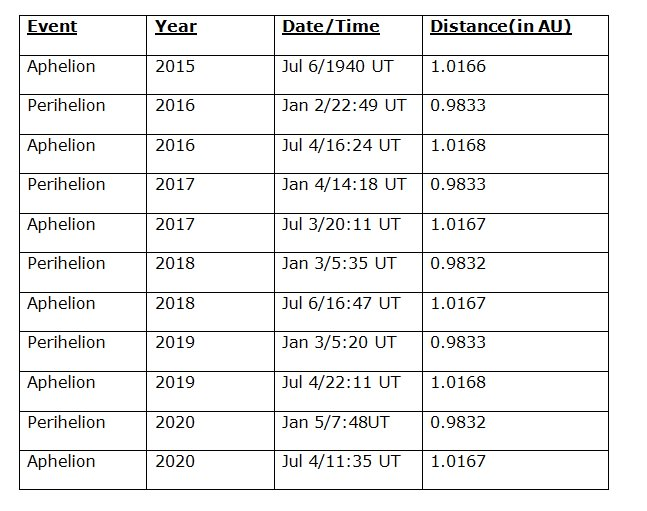
- At this juncture, the distance between Earth and the Sun extends to approximately 152.5 million kilometres.
- Perihelion: At Perihelion, Earth is closest to the Sun, occurring around January 3 annually, with a distance of approximately 147.5 million kilometres.
- The Earth's perihelion and aphelion dates are not fixed due to variations in its orbit eccentricity.
-
Significance of Aphelion:
- Variation in Solar Radiation: During early July, Earth's aphelion slightly reduces the sunlight reaching India, but this has a minor impact on temperatures.
- Seasonal changes, due to Earth's tilt, are much more important. The difference in solar radiation caused by Earth's elliptical orbit is only about 3%, showing that seasonal factors are the main influence on India's temperatures, even at aphelion.
- Stability of the Orbit: The aphelion is a natural consequence of Earth's elliptical orbit, which is a result of the gravitational interactions between the planets. Maintaining this slightly elliptical orbit is crucial for the long-term stability of the Earth's climate and habitability.
- Variation in Solar Radiation: During early July, Earth's aphelion slightly reduces the sunlight reaching India, but this has a minor impact on temperatures.
Note
- The Earth's seasons are primarily determined by the tilt of the Earth's axis, not the distance from the Sun.
- The Earth's tilt causes the uneven distribution of solar radiation, leading to the four seasons: spring, summer, fall (autumn), and winter.
Perigee and Apogee
- Perigee is the point in the moon's elliptical orbit that is closest to the Earth. At perigee, the moon is at its smallest apparent size and its gravitational pull on the Earth is strongest.
- Apogee is the point in the moon's elliptical orbit that is farthest from the Earth. At apogee, the moon is at its largest apparent size and its gravitational pull on the Earth is weakest.
Read More: Types of Orbit
UPSC Civil Services, Previous Years Questions (PYQ)
Q. On 21st June, the Sun (2019)
(a) does not set below the horizon at the Arctic Circle
(b) does not set below the horizon at Antarctic Circle
(c) shines vertically overhead at noon on the Equator
(d) shines vertically overhead at the Tropic of Capricorn
Ans: (a)
Annual Survey of Unincorporated Enterprises (2022-23)
Why in News?
Recently, the Ministry of Statistics and Programme Implementation (MoSPI) has released the Annual Survey of Unincorporated Enterprises for 2022-23.
What is the Scenario of Informal Workers According to the Survey?
- As per the survey, Uttar Pradesh, West Bengal and Maharashtra had the highest share of informal sector enterprises in both rural and urban areas in 2022-23.
- The share of informal sector enterprises decreased in the post-pandemic year 2022-23 in states such as Gujarat, Haryana, Karnataka, Kerala, Madhya Pradesh, Tamil Nadu and West Bengal.
- The state of Uttar Pradesh topped among major states with an increase in the number of unincorporated non-agricultural enterprises.
-
Share of Informal Sector Enterprises (in 2022-23 as compared to 2021-22):
-
Uttar Pradesh: Increased by 0.84% (from 12.99% to 13.83% of total informal sector enterprises(TISE)).
-
West Bengal: Decreased by 0.27% (from 12.31% to 12.04% of TISE).
-
Maharashtra: Increased by 0.56% (from 8.81% to 9.37% of TISE).
-
Delhi: Increased by 0.79% (from 0.64% to 1.43% of TISE).
-
-
Informal sector workers (in 2022-23 as compared to 2021-22):
- Uttar Pradesh: Increased by 0.27 crore from 1.30 crore).
- West Bengal: Increased by 0.03 crore from 1.02 crore)
- Maharashtra: Increased by 16.19 lakh
- Total Workers in Unincorporated Non-Agricultural Sector:
- During 2022-23: Increased by 1.17 crore workers (from 9.79 to 10.96 crore).
- Urban Workers: Increased by 0.69 crore workers (from 5.03 to 5.72 crore).
- Rural Workers: Increased by 0.48 crore workers (from 4.76 to 5.24 crore).
Read more: Reforming India's Informal Labour Market
|
Drishti Mains Question Q. Examine the necessity of transitioning the informal sector into the formal economy and outline strategies to facilitate this structural transformation more effectively. |
UPSC Civil Services Examination, Previous Year Question (PYQ)
Mains:
Q. How globalisation has led to the reduction of employment in the formal sector of the Indian economy? Is increased informalization detrimental to the development of the country? (2016)
Mount Etna and Stromboli Eruption
Recently, volcanic eruptions at Mount Etna and Stromboli in Italy have caused the eruption of hot ash and lava from it.
- Mount Etna is located on the island of Sicily, in the southern part of Italy.
- It is the highest peak in Italy South of the Alps.
- Europe's most active volcano is also one of the largest volcanoes in the world. Furthermore, it is the highest mountain on a Mediterranean island and the most active stratovolcano globally.
- Stratovolcanoes are tall, conical volcanoes built up by layers of hardened lava, ash, and rock fragments.
- They are typically found above subduction zones, and they are often part of large volcanically active regions, such as the Ring of Fire that frames much of the Pacific Ocean.
- Stromboli (also a stratovolcano) is a small island in the Tyrrhenian Sea, off the northern coast of Sicily, Italy.
- It is one of the most continuously active volcanoes in the world, also known as "Lighthouse of the Mediterranean.”
Read More: Volcanism
World Zoonoses Day
On the eve of World Zoonoses Day, the Department of Animal Husbandry and Dairying (DAHD) organized an interactive session.
- It is celebrated in honour of Louis Pasteur, who administered the first successful rabies vaccine, a zoonotic disease, on 6th July 1885.
- Zoonoses are infectious diseases that can transfer between animals and humans, such as rabies, anthrax, influenza (H1N1 and H5N1), Nipah, Covid-19, brucellosis, and tuberculosis.
- Many non-zoonotic diseases affect livestock without posing a risk to human health.
- Examples include Foot & Mouth Disease, Peste des Petits Ruminants (PPR), Lumpy Skin Disease, Classical Swine Fever, and Ranikhet Disease.
- About 60% of all diseases are zoonotic, and 70% of emerging infections originate from animals.
- Prevention and control of zoonotic diseases rely on vaccination, good hygiene, animal husbandry practices, and vector control through the One Health approach.
- To mitigate the risk, the DAHD has launched a nationwide campaign for Brucella vaccination of bovine calves under National Animal Disease Control Programme (NADCP) and undertaken Rabies Vaccination under Assistance to States for Control of Animal Diseases (ASCAD).
- India accounts 11% and 18% of the global livestock and poultry population, respectively. Additionally, India is the largest producer of milk and the second-largest producer of eggs globally.
Read more: World Zoonosis Day
Indigenous Defence Production Hits Record
Recently, India's indigenous defense production reached a record high of Rs 1.27 lakh crore in 2023-24, a growth of 16.7% over the FY 2022-23.
- The value of defense production in FY 2022-23 was Rs 1.08 lakh crore.
- India's annual defense production target is set to reach Rs 3 lakh crore by 2028-29.
-
79.2% of the total value of production came from Defence Public Sector Undertakings (DPSUs) and other PSUs, while 20.8% was from the private sector.
- The growth in defense production value has been over 60% since 2019-20.
- Defense exports grew by 32.5% from Rs 15,920 crore in FY 2022-23 to reach Rs 21,083 crore in 2023-24. It is expected to reach Rs 50,000 crore by 2028-29.
- The defence budget for 2024-25 has been allocated Rs 6.21 lakh crore. Capital acquisition projects worth over Rs 4,35,000 crore have been approved in 2023-24.
- 75% of the capital acquisition budget has been earmarked for procurement from local companies.
- The significant growth in the Indian defence sector is attributed to policy reforms, Ease of Doing Business initiatives, and comprehensive digital solutions, reflecting global acceptance of Indian defense products and technologies.
Read More: Defence Exports Touch Record High.
4,000-year-old Temple in Peru
A team of archaeologists has unearthed a 4,000-year-old ceremonial temple buried in a sand dune in Zana, Lambayeque region, northern Peru, near the Pacific Ocean revealing skeletal remains that suggest offerings for ancient religious rituals.
- Skeletal remains of three adults were found within the multi-story structure. One of the remains was accompanied by offerings and possibly wrapped in linen or clothing.
- A high-relief drawing on one temple wall depicts a mythological figure with a human body and a bird's head, predating the pre-Hispanic Chavin culture.
- The Chavín civilization developed in the northern Andean highlands of Peru between 900-250 BCE. It was located in the Mosna Valley , where the Mosna and Huachecsa rivers merge. It is now a UNESCO World Heritage site (Chavin de Huantar).
- Nearby excavations revealed another temple belonging to the late Moche culture, dating back about 1,400 years.
- The Moche culture, also known as the Mochica culture, thrived on the northern coast of Peru between roughly 100 CE and 800 CE. Flourished in the river valleys along the arid north coast of Peru.
- Northern Peru is known for ancient ceremonial complexes like the Sacred City of Caral (5,000 years old).
- Peru's most prominent archaeological site is the Incan citadel Machu Picchu, built in the mid-15th century.
Read more: Discovery of Ancient Maya City

